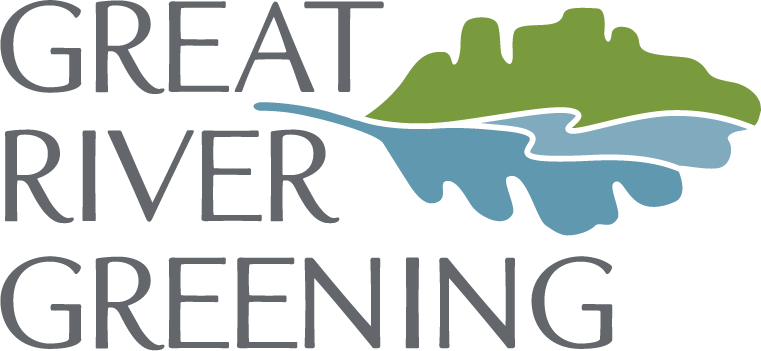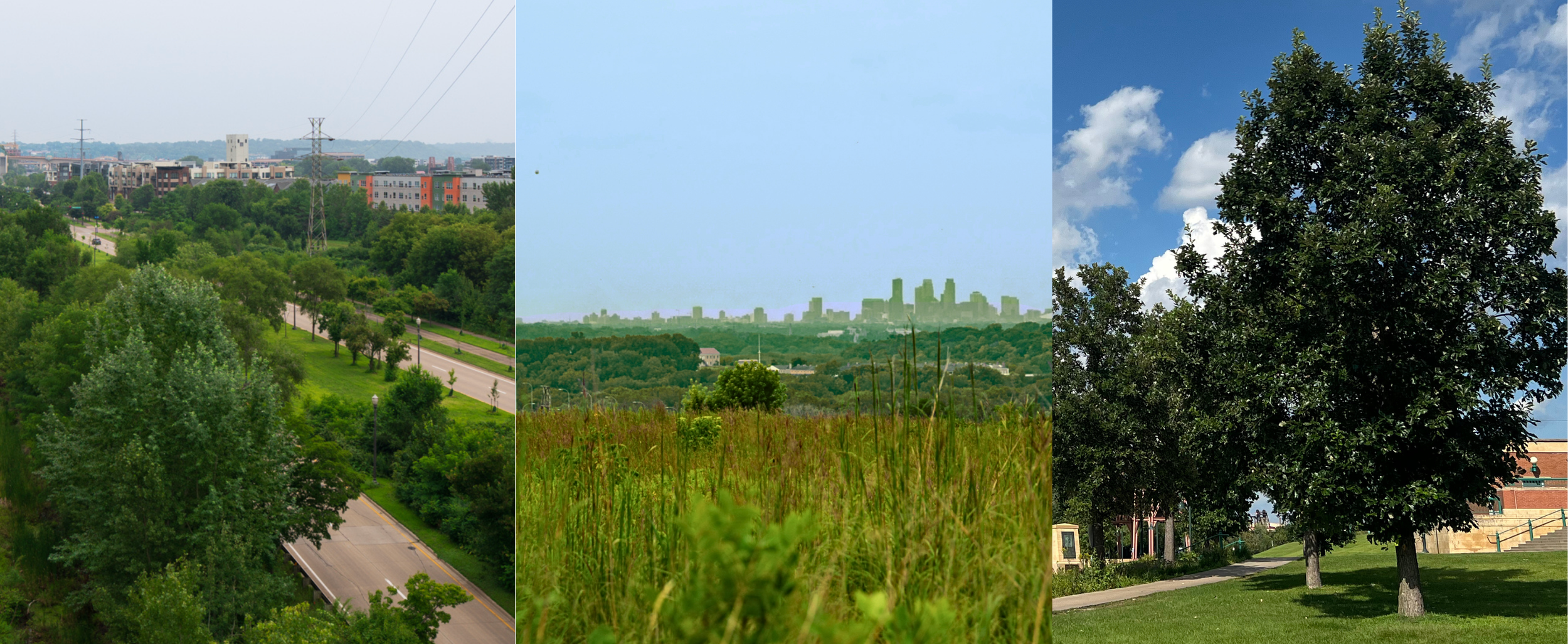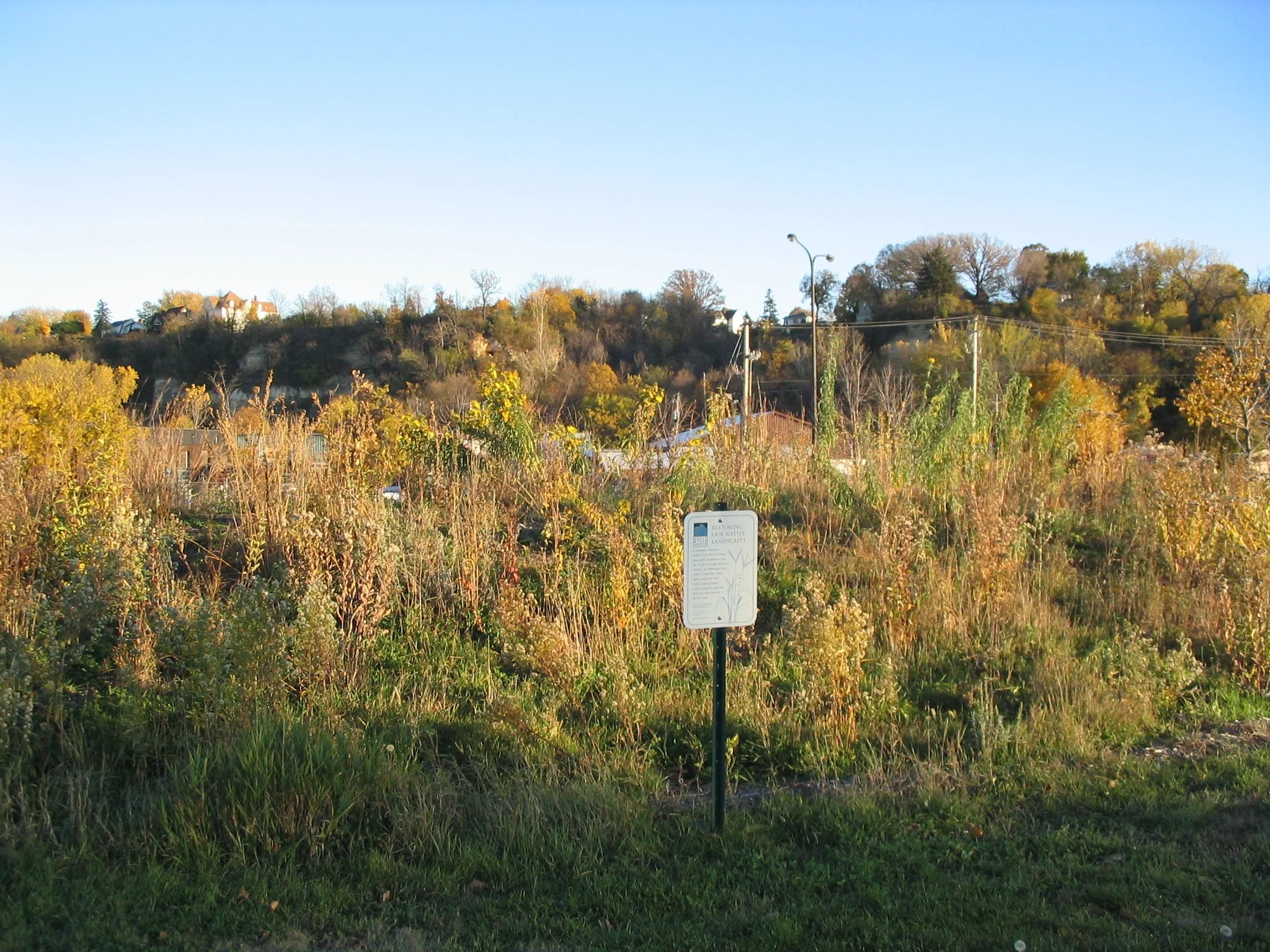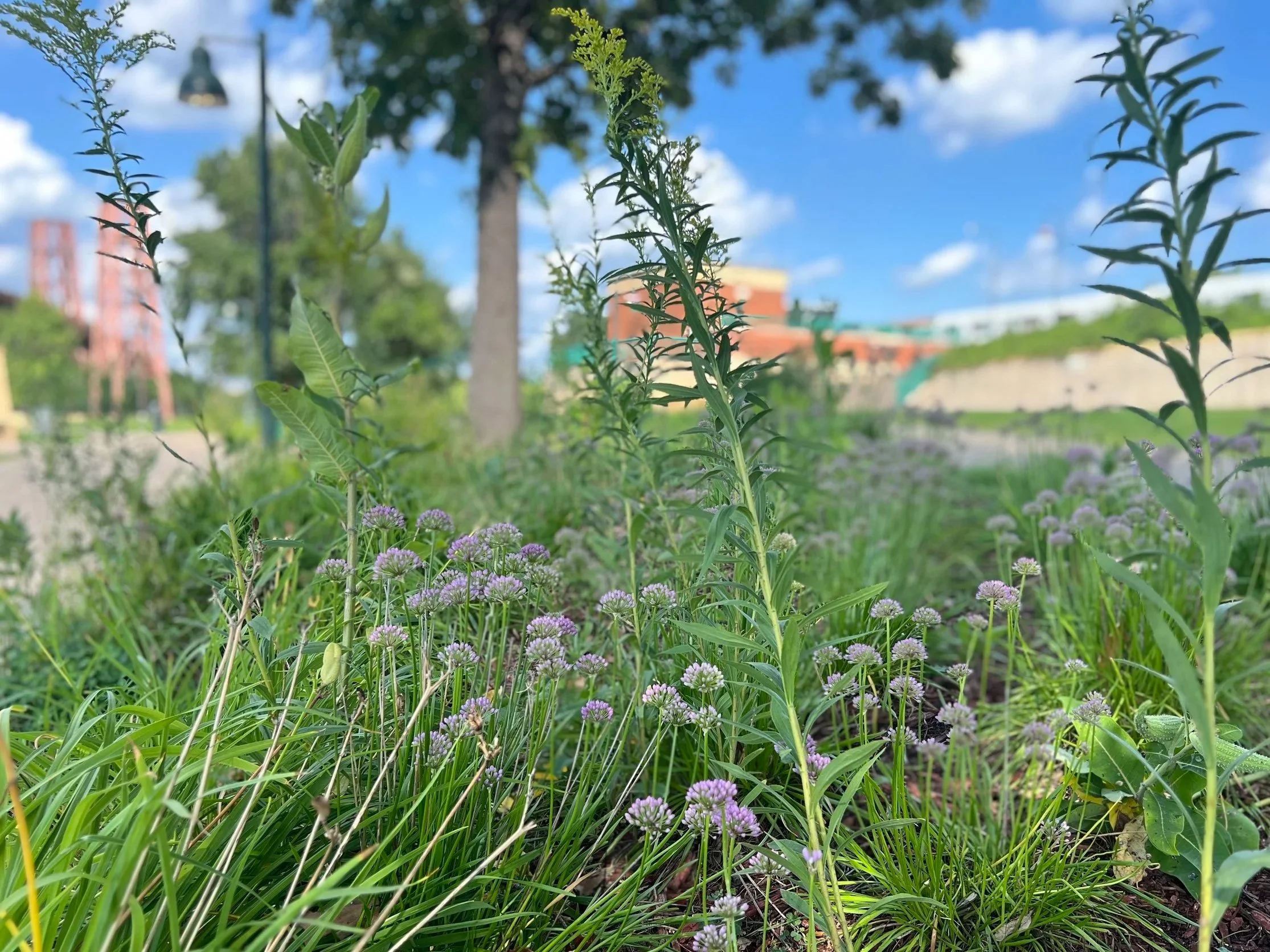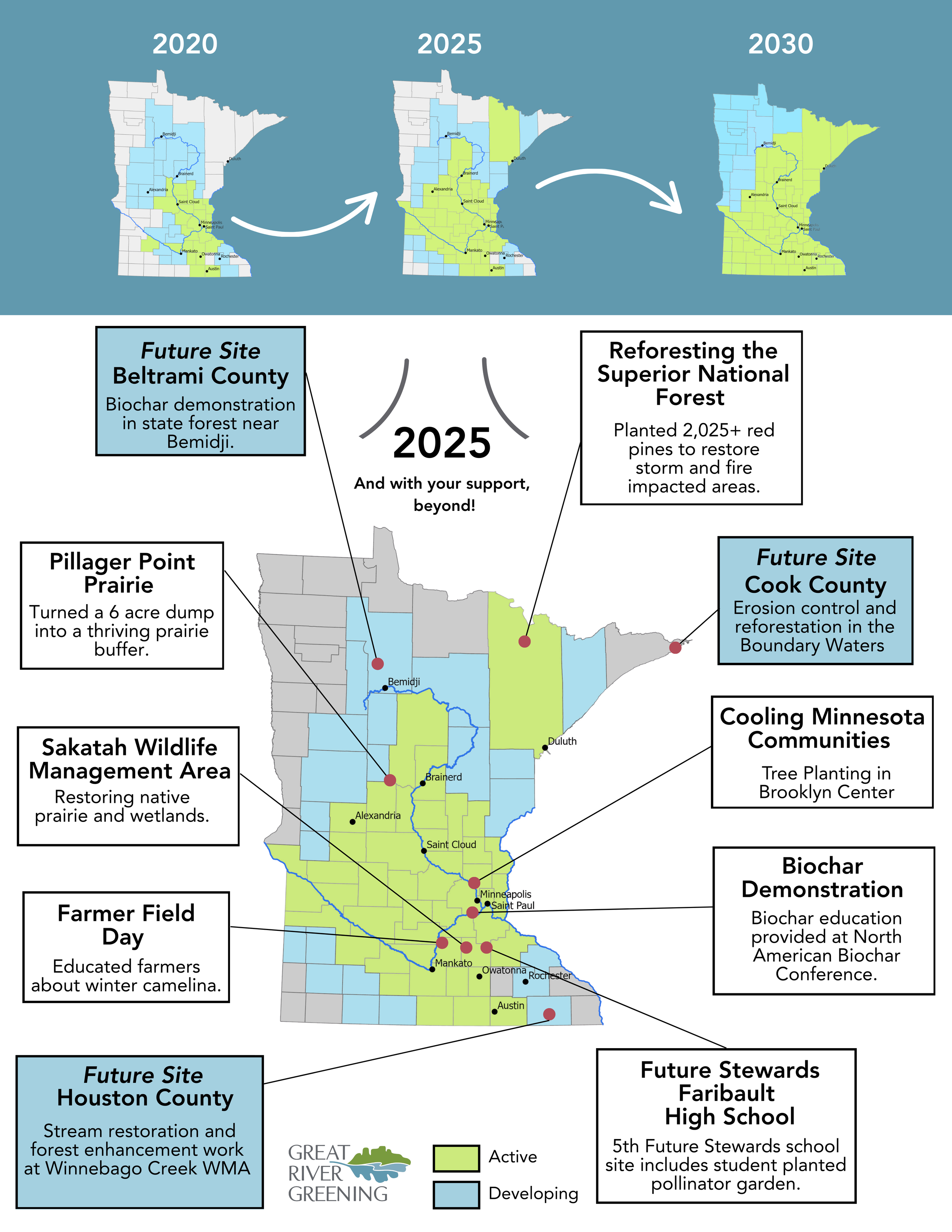Looking at Three Decades of Impact
Left to right- Mississippi River Flats, Oheyawahi, Harriet Island Regional Park
30 years. 50,000 acres transformed.
While we take great pride in these numbers, the true measure of our work is not so easily quantifiable. Really witnessing the impact of our work is better done in the parks, rivers, and public lands that we’ve dedicated our services to since 1995. What does three decades of restoration look like in trees, prairies, and shorelines? We revisited several key project sites to reflect on what it means to care for the land across generations.
Left to right- Volunteers plant trees with Greening the Great River in 1997, Mississippi River Flats lush with trees in 2025
Mississippi River Flats
Our inaugural project, Greening the Great River, began just four miles from our current office in St. Paul. This project transformed and revitalized the Mississippi River Flats, a barren industrial and commercial area on the Mississippi River just outside of downtown. With the help of 7,000 volunteers and 450 groups, our early team planted 31,000 trees and more than 25,000 prairie plants across 50 acres.
Volunteers at the site of the Greening the Great River project, 1997
What’s more powerful than these numbers? Walking the restored riverfront today surrounded by wildflowers, native grasses, and a thriving urban woodland so lush you forget downtown is just steps away.
Young trees freshly planted at the Mississippi River Flats, 1997
Mississippi River Flats with mature trees, 2015
Left to right- Oheyawahi planting site in 2004, Oheyawahi planting site in 2025
Oheyawahi
Oheyawahi, also known as Pilot Knob, is a culturally and ecologically significant site outside of Minneapolis. In 2005, the City of Mendota Heights purchased this land to prevent developers from building on the historic site and partnered with organizations like Great River Greening to restore the land to prairie and oak savannah.
With the power of over 1,800 volunteers and multiple herds of sheep, goats, and horses, we played a key role in bringing this land back to life. Today, we frequently revisit the site for pollinator monitoring surveys, helping to identify and protect the diverse bees, butterflies, and other vital insects that now call it home.
Oheyawahi prairie in bloom, 2014
Left to right- Harriet Island post-planting in 2002, Harriet Island Regional Park in 2025
Harriet Island Regional Park
A 62.9 acre green space along the Mississippi River, Harriet Island Regional Park offers a natural refuge outside of downtown St. Paul. We began work at this site in the early 2000s, just after becoming an organization. Volunteers and students from across the metro joined us to help to plant native trees and plants across the park. Nearly 25 years later, the mature trees stand as living proof of the power of restoration, community effort, and time.
Harriet Island Regional Park, 2004
Harriet Island Regional Park, 2025
Trout Brook in 2021
Trout Brook Nature Sanctuary
In 2015, Greening joined several other groups in taking on the ambitious project of restoring Trout Brook Nature Sanctuary. This involved a stream re-meander, bringing the course of the stream back to where it would have naturally flowed in the years before it was straightened by previous land owners. By reconstructing the stream to its natural state, sediments now collect in the floodplain instead of flowing into the St Croix River.
Trout Brook Nature Sanctuary, 2014
Volunteers planting native vegetation, 2015
We also planted native trees, shrubs, and wildflowers to restore natural habitat. This project brought the land and water back to life— over eight years, Trout Brook saw a 6,000% increase in the amount of trout!
Trout Brook Nature Sanctuary, 2017
Looking Ahead: 100,000 Acres by 2030
These sites make up only a small fraction of the 50,000 acres we’ve restored and sustainably managed since the founding of our organization. We’re committed to continuing to grow our work, with an ambitious goal of restoring another 50,000 acres in the next five years! With your support, we can continue to transform Minnesota’s lands and waters, leaving a lasting legacy for decades to come.
Learn more about how you can get involved and help us continue our work for a greener future at www.greatrivergreening.org.
